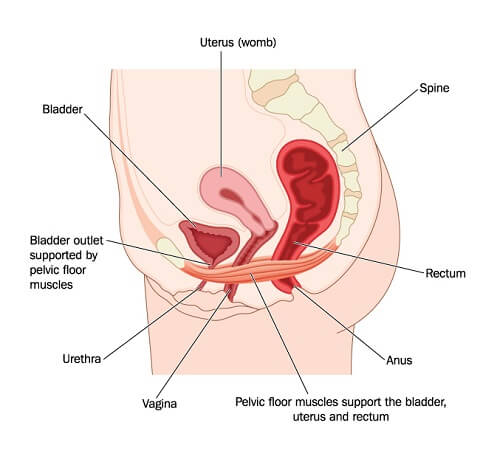Kegel Exercises – Are You Doing Them Right?
Are you pregnant or just given birth? Have you had recent prostate surgery? Do you have trouble controlling your bladder? Then you need to do Kegel exercises. These exercises are designed to strengthen your pelvic floor muscles (Kegel muscles) that may become weak after giving birth, with age or injured with surgery.
What exactly are the Kegel muscles?
 There are three main muscle groups that make up the Kegel muscles or lower pelvic floor. The bladder is a primary lower pelvic floor muscle and is used to hold your urine. The sphincter muscles help you open and shut your urethra which is a tube that drains urine from your bladder. The pubococcygeus is the pelvic floor muscle which supports your bladder and rectum; its primary purpose is to help control your urine flow.
There are three main muscle groups that make up the Kegel muscles or lower pelvic floor. The bladder is a primary lower pelvic floor muscle and is used to hold your urine. The sphincter muscles help you open and shut your urethra which is a tube that drains urine from your bladder. The pubococcygeus is the pelvic floor muscle which supports your bladder and rectum; its primary purpose is to help control your urine flow.
Who should use these exercises?
Kegels are often prescribed by doctors and personal trainers for women; however, these exercises help both men and women and should be performed by everyone. They help with urine leakage or bowel control in the elderly population. These exercises are very important for women both pre- and post-natal. They will provide help for men and women post-surgery (gynecologic or prostate).
How Do You Know You Are Using the Right Kegel Muscles?
A Kegel exercise is initially done by pretending you have to urinate and then holding it. You loosen and tighten the muscles used to control the flow of urine. When doing this exercise you should feel the vaginal muscles (for women), bladder, and/or anus get tight and move up into the pelvic cavity. During Kegel execises, only the pelvic floor muscles should be contracting. You should not feel the thighs, buttocks or abdomen muscles tighten.
How to do Kegel Exercises
Kegel exercises can be done anywhere, at any time, while sitting or lying down, such as when you are at your desk, in your car or watching television.
Kegel exercises should be done 3 times a day using the following instructions:
- Make sure your bladder has been emptied, then either sit or lie down.
- Tighten your pelvic floor muscles. (Imagine an elevator going up towards your bellybutton)
- Squeeze these muscles and count 8 seconds (start with 3-5 seconds, if they are weak)
- Release the muscles for 10 seconds, then repeat for 10 more repetitions
- While doing these exercises, breathe deeply and relax the rest of your body (do not tighten your stomach, thigh, buttock, or chest muscles).
- Repeat 3 times a day (morning, afternoon, and night)
After 4 to 6 weeks, you should feel the strength in these muscles increase. Be consistent, but do not increase the repetitions or time held. Overdoing it can lead to straining when urinating or during bowel movements. Do not do Kegel exercises when urinating once you have discerned the correct muscles, as this will weaken your pelvic floor muscles over time. Consistency is key; it will take several months for symptoms to lessen when you begin these exercises. Incontinence will return if you stop doing these exercises. You need to do them consistently throughout life. Discuss this exercise with your certified personal trainer, if you are not sure you are doing them correctly.



